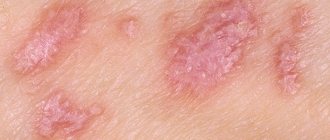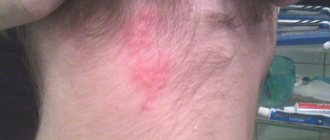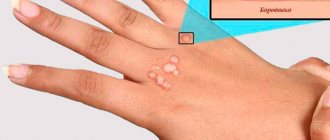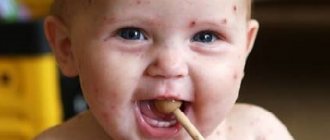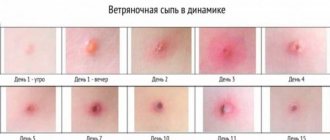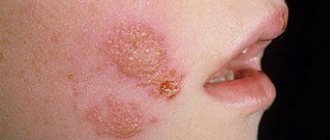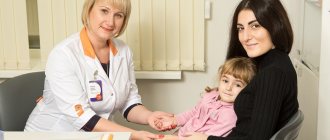This skin disease causes its owners not only physical, but also moral and even social discomfort.
And if we are talking about lichen in a child, then the parents also come into the zone of close attention, and even condemnation. The withering sidelong glances of neighbors, and simply those around you, mercilessly pierce the soul and chop the heart into pieces.
They say, what kind of parents are they who allowed such disgrace? And, probably, not everything is in order with the sanitary culture in the family, others pick up, savoring the topic, sprinkling salt on the wounds. At the same time, children are prohibited from communicating, giving the suffering child a categorical label - contagious.
Agree, it is a painful and extremely unpleasant condition. And you won’t explain to everyone that this happened completely by accident - you can’t put a scarf on every mouth.
Unfortunately, here we have to talk not only about medical obscurity and an ordinary lack of understanding of the cause-and-effect relationships of the occurrence of the disease, but also about the banal callousness of others.
Description of the disease
Depending on the type of lichen, the rash may be dry or weeping, pale pink or bright red.
Most often, the disease affects the back, face and chest of the child (it is in these areas that the largest number of sweat glands are located). The disease is infectious in origin and is caused by viruses or fungi. The disease most often manifests itself in the spring-summer season, when it is warm and humid outside. At the moment, a large number of varieties of lichen are known. Many of them are highly contagious and potentially dangerous to the child’s immediate environment. That is why, if there is any suspicion of an infectious disease, it is necessary to immediately show the patient to a qualified specialist.
Types of psoriasis in children
In children, there are several forms of lichen planus.
- The most common form is vulgar psoriasis or plaque psoriasis. Flaky spots are localized on the elbows, head, and knees.
- Teardrop-shaped. Drop-shaped spots appear on the legs, arms, torso and head. The rash goes away or transforms into a vulgar form.
- Rarely pustular or pustular.
- Erythrodermic psoriasis has a high risk of death, so it can only be treated in a hospital.
- A small percentage of children suffer from psoriatic arthritis. The joints become swollen and painful, and conjunctivitis often appears.
- Diaper psoriasis.
No studies have confirmed the contagiousness of psoriasis.
Symptoms of lichen
The clinical picture of the disease directly depends on its form. There are 5 most common variants of lichen: pink, multi-colored, red flat, ringworm, shingles.
- Manifestations of pityriasis rosea. This type is characterized by the appearance on the child’s skin of a single pink plaque with a diameter of 3-4 cm. The formation is prone to peeling and provokes moderate itching. A week after the plaque appears, multiple daughter rashes form on the child’s skin. Pityriasis rosea often affects a child's back, shoulders and abdomen. Often the rash is localized in natural folds and curves.
- Symptoms of versicolor.
Tinea versicolor usually occurs on the child's scalp or upper half of the body. This is one of the few varieties that affects only the upper layer of the epidermis and is not transmitted by contact. At the very beginning of the disease, lichen can be suspected by the appearance of small spots of pink, yellow or brownish color. Then the spots that appear gradually grow, forming large lesions with jagged edges. Lichen versicolor got its name due to its distinctive feature: focal rashes can change color over time, becoming dark brown or dark brown spots. In addition, this form has another distinctive feature - the skin elements are not accompanied by itching or burning of the skin, and therefore do not cause the child much discomfort. - Manifestations of lichen planus.
With this form, scaly spots of bright red or dark brown color appear on the mucous membranes or skin of the child. The disease can be identified by severe itching, which significantly reduces the child’s quality of life, and by the characteristic depressions in the middle of each rash. In most cases, formations are localized on the skin in the area of natural folds, stomach and back. After recovery, long-lasting pigment spots may remain at the site of the rash. - Clinical picture of ringworm.
Ringworm is the most common form of the disease in children and adolescents. Pathology develops on the skin, nails, scalp and hair itself. The skin is affected by reddish round spots, accompanied by peeling and itching. If lichen affects the scalp, this is accompanied by the appearance of a fairly large area of baldness, at the edges of which the hair breaks off at a level of 0.5-1 cm from the dermis (taking on a trimmed appearance). In addition to the main formation, multiple small lesions may occur. - Symptoms of herpes zoster.
This form predominantly occurs in older adolescents who have previously had chickenpox. Before the appearance of skin rashes, the patient experiences the following symptoms: weakness, drowsiness, chills, increased body temperature to subfebrile levels. The onset of the disease is often confused with influenza or ARVI.
A few days later, multiple rashes filled with clear liquid content appear on the child’s skin in the area where large nerve trunks and branches pass. Then the bubbles dry out, darken, and become crusty.
How to treat?
Question: how to treat lichen in children is a question for the average layman who requires a universal ointment or tablet.
It is immediately necessary to emphasize that treatment tactics, as well as rehabilitation time, depend solely on the severity and type of illness.
In addition, it is possible that temporary isolation of a sick baby will be required in order to localize the area where the infection is spreading.
The regimen, dose and procedure for taking medications is the exclusive prerogative of the attending physician.
All means are good for treating your child, be it traditional therapy or “grandmother’s” recipes that have come down to us from the depths of the gray Lukomorye, but have not lost their magical power.
| Medicines | Folk remedies |
| Shearer | |
| Antimycotics – antifungal medications (oral): Itraconazole, Fluconazole, Ketoconazole, Orungal, Griseofulvin. Ointments: Salicylic. Sulfuric. Sulfur-tar. Mikospor. Wilkinson's ointment. Lamisil. Prescription ointments (manufactured in pharmacies): Vidal's milk, Lassora paste. | Grated boiled beets, mixed in equal parts with honey. Rub into the affected area. Buckwheat decoction. One glass of buckwheat and two water. Boil until tender, pass the broth through a sieve. Cool and lubricate the sore spot. Cabbage leaf pulp . Grind in a blender. Mix 1:1 with sour cream - the life-giving potion is ready. Chamomile infusion . Pour a small spoon of chamomile petals with 200 grams of boiling water. Let cool. Wipe the affected area with a swab three times a day. Do not wash and let dry on your own. |
| Pink | |
| Erythromycin is an antibiotic. Acyclovir is an antiviral. Tavegil is an antihistamine. Hydrocortisone – hormonal, anti-inflammatory effect. Tsindol - dries the body and blocks inflammatory processes on the skin and the proliferation of microorganisms. Activated carbon – removes toxins. | Calendula ointment. Grind 10 g of dry calendula, add and mix with 50 grams of Vaseline. Treat the sore spot three times a day. Chamomile decoction and cabbage paste. The recipe is described above. Tar ointment . Birch tar and butter are mixed one to one. At night, lubricate the napkin and cover the sore spot. Yeast dough : a faceted glass of milk, 30 grams of raw yeast, 800 grams of flour, one egg, 2 large spoons of honey and 4 of the same spoons of vegetable oil. Apply the finished dough for two hours three times a day. Paper ash . Burn a blank white sheet of paper to ashes. Add 5 grams of alcohol. Rub the resulting composition into the affected area three times a day. |
| girdling | |
| Antiviral drugs: Acyclovir, Famvir, Valacyclovir, Valtrex. Antiviral ointments and gels: Zovirax. Acyclovir, Viru-merz. Hormonal agents: Prednisolone, Hydrocortisone. Strengthening the immune system: Neovir, Arbidol, Rimatodin. | Wormwood infusion. Pour a small spoon of chopped herbs with 100 grams of alcohol or a glass of vodka. Let it brew for a week. Shake regularly. Apply a cloth soaked in the solution to the affected area for 20 minutes. At the end of the procedure, lubricate the area with castor oil. Burdock decoction. Grind the burdock leaves. Pour 100 grams of boiling water over a large spoon of the starting material and steam for 5 minutes. Remove and cool. At night, moisten a napkin and wrap the inflamed area. Porridge from marsh cinquefoil . Pass the fresh herbs of the plant through a meat grinder. Apply the paste to the wound overnight. Herbal decoction . Take, mix and chop in equal parts: willow bark, blackberry leaves, tea rose petals, calendula flower, horsetail. Pour 50 grams of the mixture into three glasses of water. Bring to a boil, turn off the heat and simmer for another 15 minutes. Cool the resulting broth and filter. Before going to bed, moisten a napkin and cover the affected area. |
| Flat red | |
| Corticosteroids: Prednisolone, Metipred. Synthetic interferons: Neovir, Ridostin, Interferon-alpha 2b. Antihistamines: Parlazin, Zyrtec, Clemastine, Tavegil, Suprastin, Loratadine, Diazolin. Antibiotics: Metacycline, Tetracycline, Azithromycin, Erythromycin, Sumamed. Hormonal ointments: Hydrocortisone, Betamethasone, Flumethasone, Cloveit. Antiallergic ointments: Gistan, Fenistil. | Calendula oil. Pour calendula flower (50 g) into a clean bowl (200 g), pour in olive oil. Leave for 1.5 months, remembering to stir. Once ready, lubricate the sore spot regularly. Calendula ointment. Steam 200 g of calendula oil and 20 g of beeswax. Cool and refrigerate. During the day, treat the rash every four hours. Herbal infusion . Grind nettle leaves, elderberry flowers, juniper berries, dandelion roots and St. John's wort herbs - equally. Take two large spoons of the mixture and mix with boiled water (half a liter). Insist for an hour. Filter and refrigerate. Drink one hundred grams before eating. |
| Colored (pityriasis) | |
| Antifungal drugs (tablets): Ketoconazole, Oranozol, Orunit, Mycozoral, Fungavis, Itraconazole, Canditral, Itrazol. Creams, ointments: Bifonazole, Mycospor, Bifosin, salicylic lotion with chamomile, Clotrimazole, Terbinafine. | Tar soap. At any time of the day, soap the affected area once. Boric acid. Lubricate during the day after 4 hours. Vinegar solution . We dilute one to one 3% vinegar and iodine. We wipe the stains once a day. Wipe the affected area with 3% vinegar twice a day. A decoction of string or celandine . A large spoon of string and a glass of boiling water - brew. We insist for one hour. Filtering. We wet a napkin and cover the affected area for an hour. |
Video:
Reasons for deprivation
The main reason for the formation of lichen is associated with the penetration of a viral or fungal infection into the body.
However, the infection process itself has not been fully studied. Scientists remain unknown why not all children (even those at risk) suffer from lichen. Despite this, there are factors that increase the risk of developing the disease in a child:
- excessive emotional and physical stress;
- exposure to stress;
- decreased immunity;
- the presence of infectious inflammatory processes;
- avitaminosis;
- allergic reactions;
- increased sweating;
- hereditary predisposition.
Infection of children most often occurs in crowded places: kindergarten, school, summer camp, public swimming pool.
Also, a common cause of the development of lichen is contact with domestic or street animals, after which the rules of personal hygiene were not followed. Each form of lichen has specific causes. Thus, pityriasis rosea clearly shows an infectious-allergic nature. Shingles develops as a result of various types of viruses entering the body, ringworm and multicolored fungi.
Prevention - how to protect a child?
Some readers will find this section simply unnecessary. Because it will list measures that are simple to the point of naivety, which self-respecting people must, but also must, observe and demand the same from their children.
But don’t consider this as intrusiveness - we will repeat the lesson with you again:
- When returning after a walk, immediately wash your hands with soap. During the summer season, we strongly recommend using disinfectants. Don’t be lazy - check the thoroughness of the hygiene procedure performed by your baby.
- Strictly exclude children from contact with stray animals.
- Do not allow children to use other people's personal hygiene items: combs, washcloths, toothbrushes, towels.
- Do not allow yourself and forbid your children to try on other people’s clothes, shoes and hats.
- Regularly strengthen your child's immune system. To do this, use every opportunity: walks in the air, hardening, dousing with cold water, taking natural vitamins, a healthy and balanced diet.
- During the seasonal risk period, “get hooked” on a hypoallergenic diet. These are vegetables, meat, rice, potatoes, dairy products. They will become a natural shield for you during a viral attack.
We hope that after reading this educational material you have a real tool in the fight against this skin infection. And the folk wisdom that it is better to prevent trouble than to fight it will come in handy when it comes to skin disease.
Diagnosis of lichen
Medical dermatologists have many years of experience in diagnosing and treating children infected with lichen.
Modern examination methods and high-tech equipment allow specialists to identify the form and characteristics of the course of the disease even during the first visit to the clinic. At the initial appointment, the doctor talks with the child and his parents, listens to complaints, tries to determine the factors that contributed to the occurrence of skin pathology (contact with street animals, infected people, etc.). Then the specialist proceeds to a visual inspection, during which he evaluates the size of the formations, their color, shape and location. After a preliminary diagnosis has been established, the child is sent for additional studies to confirm it:
- microscopic examination of scraping of rashes;
- Balzer iodine test;
- Wood fluorescence microscopy;
- Beignet symptom test.
In addition, a general blood and urine test will help determine the presence of an inflammatory process in the body.
Treatment of deprivation
Features of the treatment of lichen are determined by its type, severity and localization of the lesion.
Depending on the cause of the disease, the child may be prescribed antifungal, antihistamine or antimicrobial drugs, corticosteroids, immunomodulators and multivitamin complexes. It is recommended to apply antipruritic and anti-inflammatory drugs in the form of ointments or creams directly to the lesion. In addition, physiotherapeutic procedures have proven themselves well in the treatment of lichen: laser therapy, cryotherapy, UV treatment, etc.
To prevent re-infection, all clothing, linen and towels must be specially treated or replaced with new ones. Prevention of the disease consists of maintaining good personal hygiene, strengthening the immune system and keeping the house clean.
Diagnosis and treatment of lichen in the clinic for children and adolescents “SM-Doctor” means professionalism, modern equipment and affordable cost. Our specialists know how to get rid of the disease in the shortest possible time. Contact SM-Doctor dermatologists at a convenient time!
